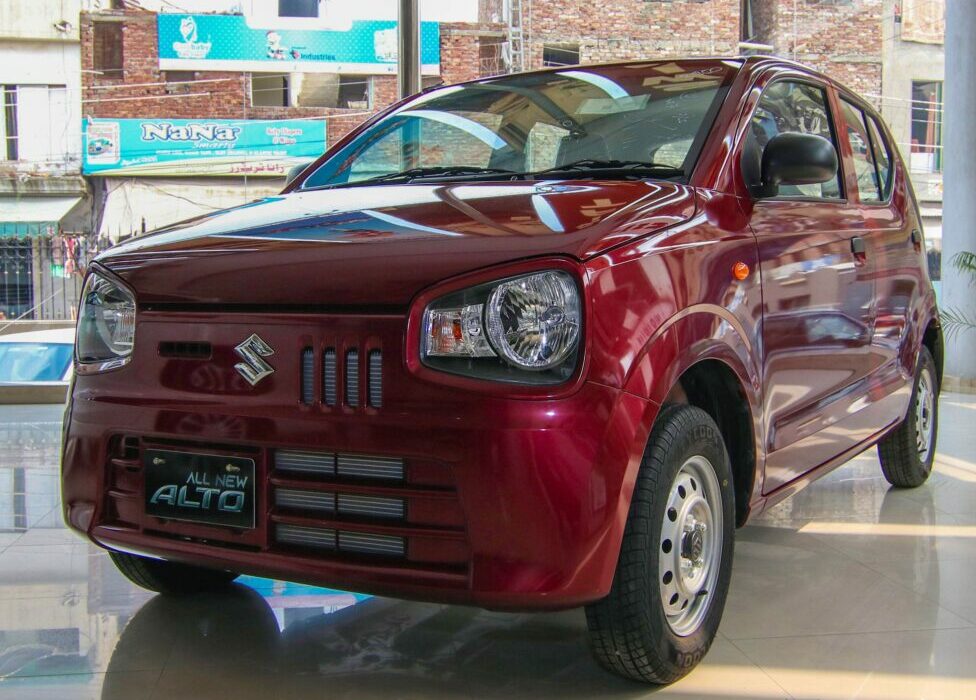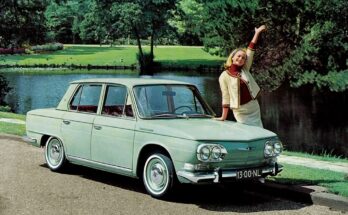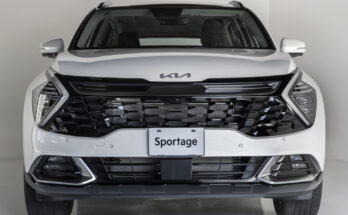The Suzuki Khyber was sort of a cultural icon that defined an era of affordable and reliable transportation in Pakistan. The Khyber won hearts with its attractive & practical design, efficient performance, and low ownership costs. For years, it remained a preferred choice for families, students, and professionals, carving out a legacy of trust and dependability.
Suzuki introduced the first-generation MK-I Swift in Pakistan during the mid-1980s, followed by a facelifted version in the late 1980s, both as CBU-imported models. In 1991, however, after acquiring an additional 15% stake to reach a total of 40% ownership, Pak Suzuki assumed control of operations. This initiated the idea of assigning new badges and names to the entire lineup— names that would reflect various popular geographical landmarks of the country.
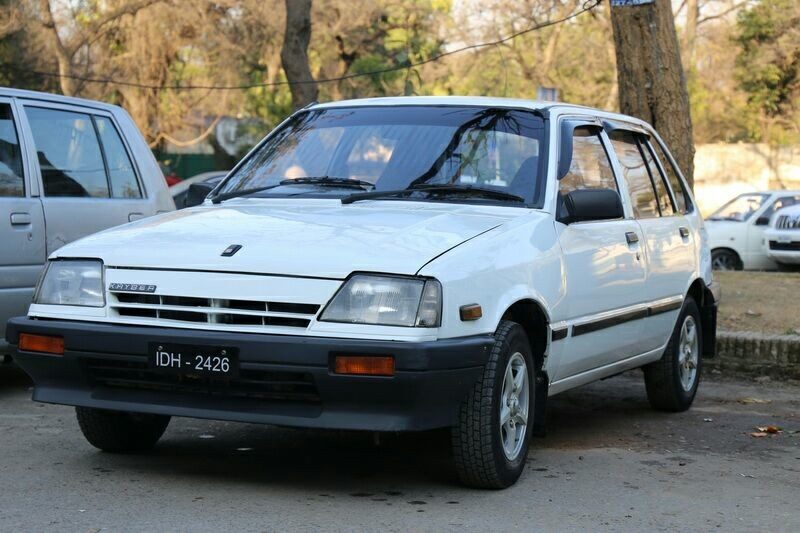
So in 1991, with the inauguration of the new Bin Qasim plant in Karachi, Pak Suzuki rebranded its entire locally assembled lineup for the domestic market. The Suzuki Carry pickup and van were renamed Ravi and Bolan, respectively, the Alto became the Mehran, the MK-II Swift sedan was rebranded as the Margalla, and the MK-I Swift hatchback was renamed the Khyber. Let’s rewind the clock and uncover the story behind its beginnings.
The Development of Swift
Not many know that the first generation Swift was originally conceived by General Motors as the M-car. However, realizing that the project wouldn’t be profitable enough, GM sold the unfinished design to Suzuki in exchange for a 5% stake in the company. Suzuki then completed the design and development, launching the car in the Japanese market in October 1983 as the Cultus. This explains why the car’s design seamlessly fits into the General Motors lineup, showcasing a clear GM corporate aesthetic.
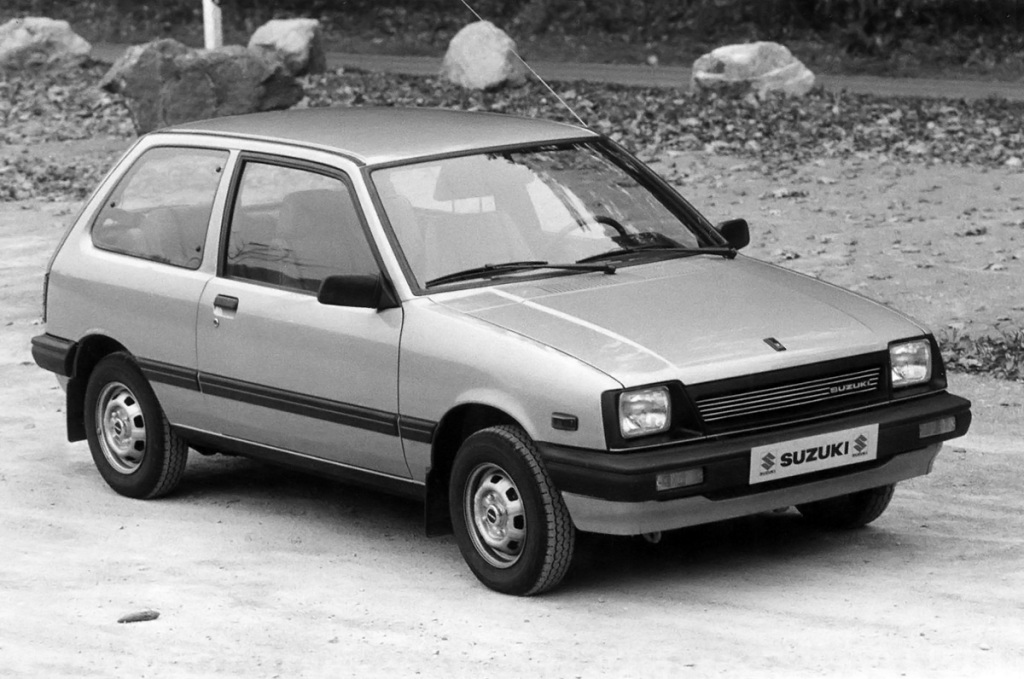
The model was also exported worldwide by Suzuki and assembled by various GM franchises, frequently undergoing badge engineering. While the Swift was marketed in the Japanese domestic market (JDM) as the Cultus, it was sold under various names globally, including the Suzuki SA310, Suzuki Swift, Suzuki Forsa, Chevrolet Swift, Chevrolet Sprint/Sprint Metro, Geo Metro, Pontiac Firefly, Maruti 1000, Holden Barina, and Subaru Justy.
Pre-Facelift vs Facelift
The pre-facelift model featured square headlamps, a black horizontal grille, basic steel rims, and a simpler rear end with straightforward tail lights and a conventional hatchback design. Inside, the dashboard was quite basic and primitive. In contrast, the facelift introduced a sharper front fascia with a more closed-off grille, revised angular headlight housings, updated bumpers, new rims with full wheel caps, and a redesigned tailgate with more angular tail lights, giving the rear a more modern and refreshed look. The interior also saw improvements, with a larger, more practical dashboard, enhancing both functionality and style.
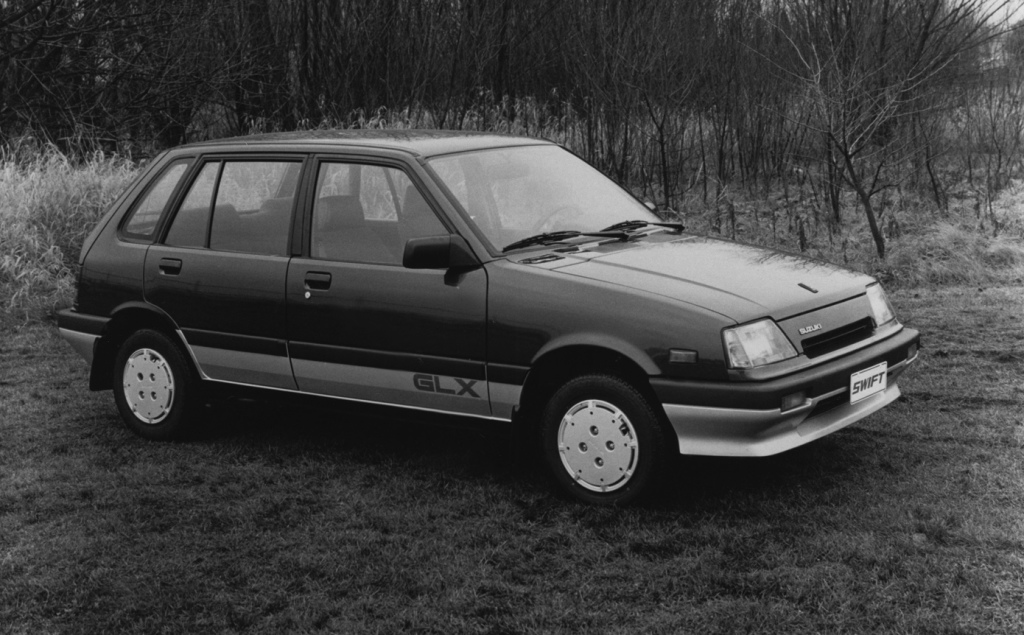
Overall the facelift featured more pronounced character lines, which contributed to a more dynamic and youthful appearance. In Pakistan, the facelift was obviously more popular than the pre-facelift and came with exciting exterior colors including metallic tones and multiple interior color options. Particularly those with blue interiors had a very distinct vibe.
The Launch of Suzuki Khyber
As previously mentioned, when Pak Suzuki’s Bin Qasim plant became operational in 1991, the locally assembled version of the MK-I Swift facelift was rebadged as the Khyber. While it retained the same exterior and interior design, as well as the engine and mechanical components, there were certain differences between the imported Swift and the locally assembled Suzuki Khyber.
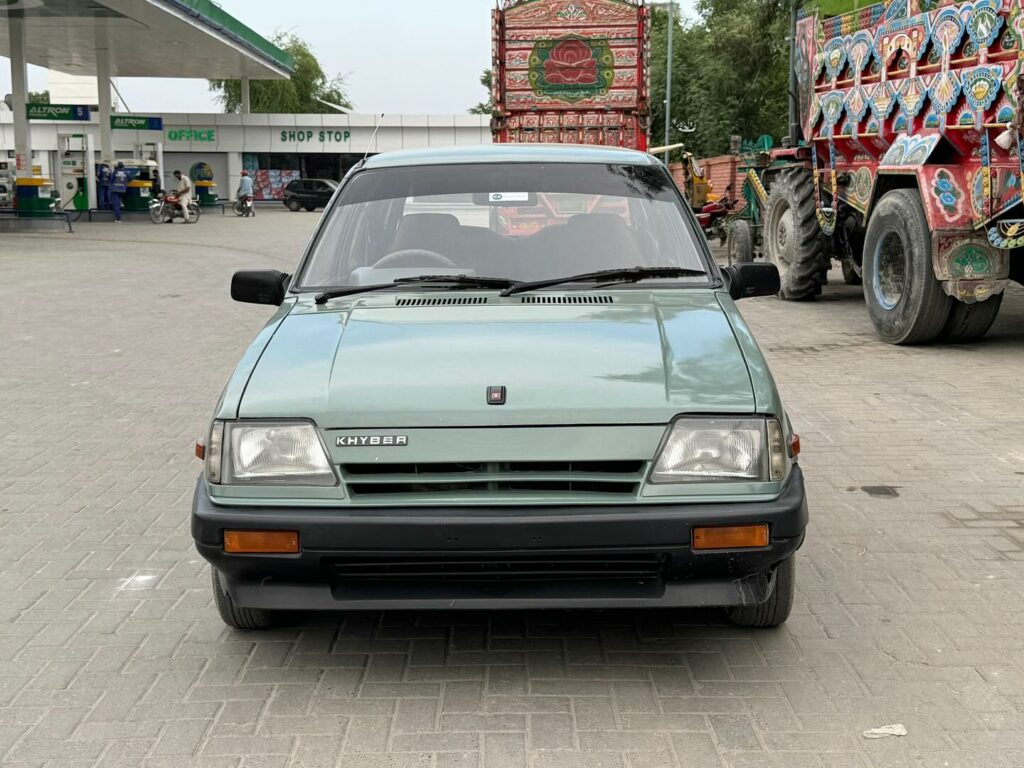
For instance, the interior was offered solely in grey, adjustable headrests were replaced with fixed seat headrests, basic door panels were used inside, and metallic exterior colors were omitted—all measures aimed at reducing costs. The hatchback was powered by a 1.0L G10A engine paired with a 5-speed manual transmission.
The Success
Despite the lack of features & equipment in the locally offered Suzuki Khyber, especially when compared to the imported Daihatsu Charade, seen as its closest rival, the Khyber enjoyed a huge success primarily because it was a lot easier to run & maintain, had an impressive fuel efficiency, and above all its reliable performance and workhorse-like durability.
Related: Remembering the Suzuki Margalla
The Khyber was not only favored by families but also became a popular low-budget choice for young enthusiasts looking to satisfy their modification cravings. Additionally, multinational and private companies also preferred to offer the Khyber to their employees.

PAMA (Pakistan Automobile Manufacturing Association) data shows that 5,720 units of Suzuki Khyber were produced in 1995-96, 6,280 units in 1996-97, 5,019 units in 1997-98, 6,991 units in 1998-99 and 4,635 units in 99-2000. While the average sales of around 5,800 units per year might not appear impressive by today’s standards, back then it was a strong figure when considering the market conditions and Pak Suzuki’s production capabilities, easily outperforming the sales of popular models like the Toyota Corolla, Suzuki Margalla, and Honda Civic. With these figures, the Khyber was the second-highest-selling car in Pakistan, trailing only behind the Suzuki Mehran.
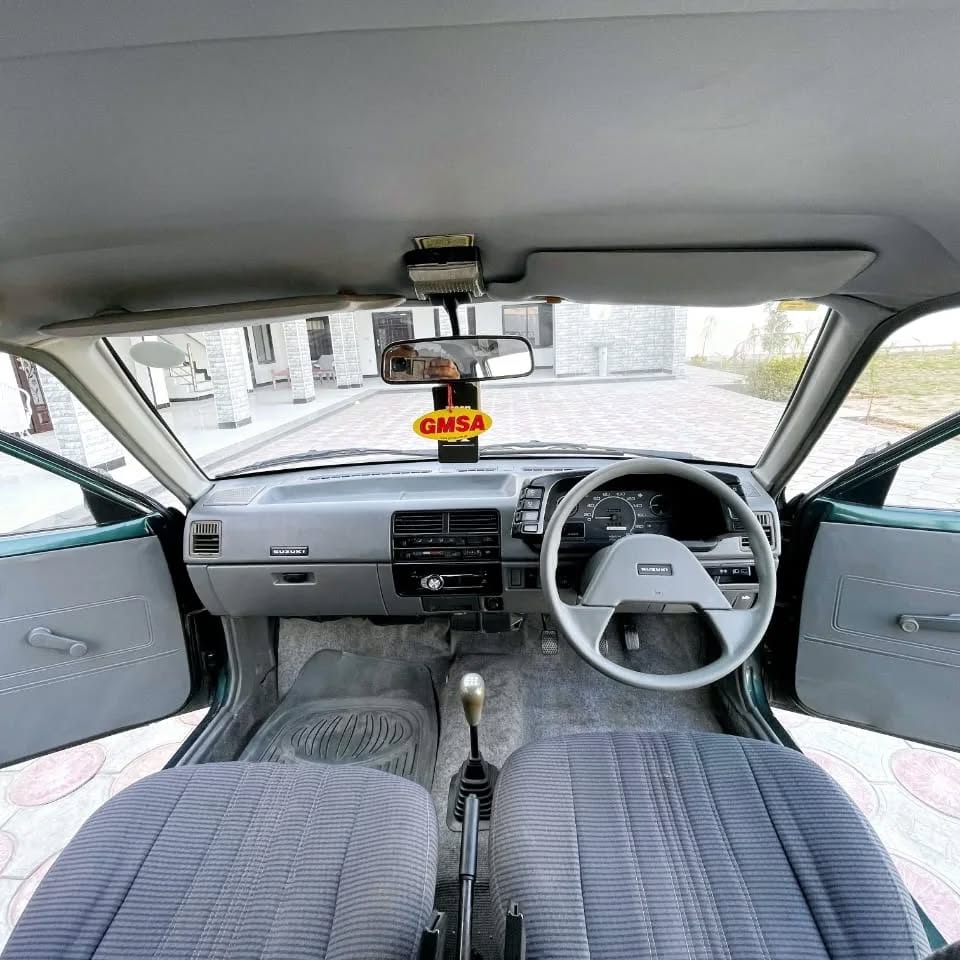
In addition to all its positives, one of the key reasons for Suzuki Khyber’s immense success was the lack of competition in its segment. During the 1990s, import restrictions were imposed to support local assemblers, a period when Toyota and Honda also began local assembly operations. As a result, popular imported models like the Daihatsu Charade and Toyota Starlet, which dominated the 1980s, were phased out of the market. Then around 1995-96, a new competitor, the Kia Pride, emerged but quickly disappeared due to the company’s misconduct, as it fled with substantial booking money without delivering the vehicles. So throughout the 90s, the Suzuki Khyber was the only 1.0L hatchback option available to car buyers in Pakistan.
The End of Tenure
In 1999, Dewan Farooq Motors entered the market as a new player, introducing the Hyundai Santro as its key offering. It became the first locally assembled 1.0L hatchback besides the Khyber, which by then had been in production for over a decade. With its relatively modern design & features and a fuel-injected engine, the Santro presented a challenge to the aging Khyber, prompting Pak Suzuki to bid its farewell.
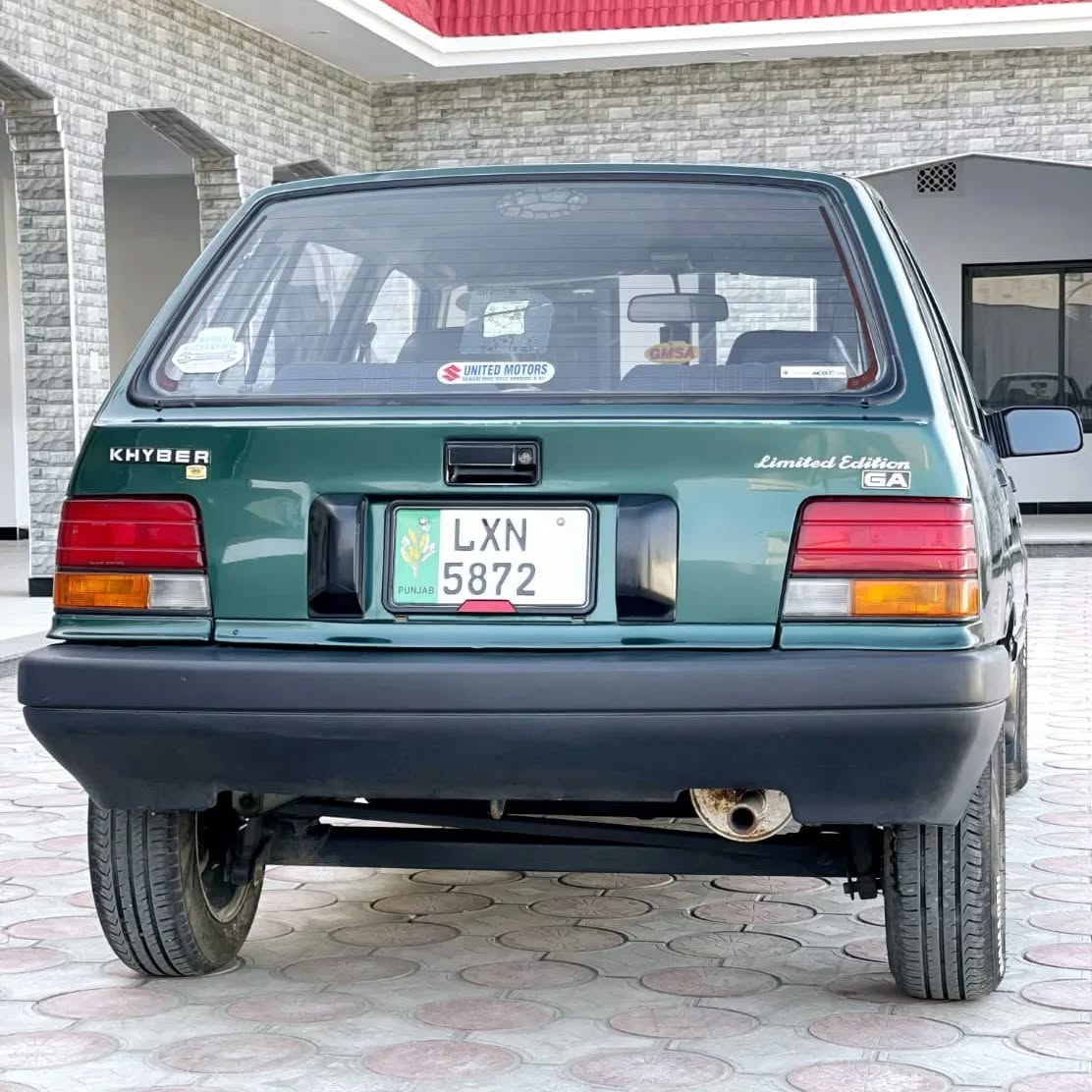
Towards the end of its tenure in 1999 & 2000, Pak Suzuki launched a Limited Edition model that featured metallic colors. Suzuki Khyber was eventually replaced by the MK-II Swift (sold as the Cultus) in 2000, marking the end of its decade-long production run. In total, the MK-I Swift facelift had a nearly 13-year presence in Pakistan if we count the CBU imported model that was first introduced in 1988. Together the MK-I Swift lasted for nearly 17 years if we add the pre-facelift model from 1983/84.
The Legacy
Decades after its production ceased, the Suzuki Khyber continues to be a familiar sight on our roads, a testament to its enduring efficiency and workhorse-like reliability. With its no-frills engineering, proven engine, and minimal maintenance costs for parts and repairs, the Khyber continues to be a popular and respected option in the used car market.

Considered one of the best hatchbacks ever rolled out by Pak Suzuki, the Khyber is fondly remembered by fans for embodying an era of straightforward, reliable mobility. If you have an ownership experience of Suzuki Khyber, don’t forget to share it here using the comment section below.

A computer animation professional with over 23 years of industry experience having served in leading organizations, TV channels & production facilities in Pakistan. An avid car enthusiast and petrolhead with an affection to deliver quality content to help shape opinions. Formerly written for PakWheels as well as major publications including Dawn. Founder of CarSpiritPK.com

